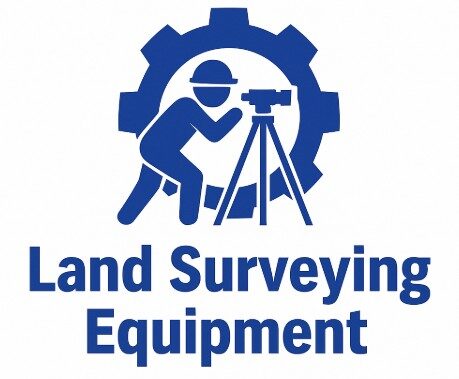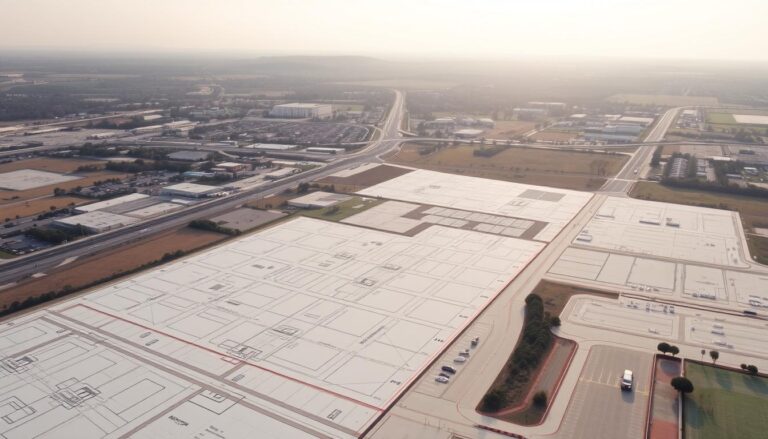Land Surveying Benchmarks: Everything You Need to Know
The idea of land surveying benchmarks is key in land surveying. It started with marks carved into stone. These marks helped surveyors set up a “bench” for leveling rods.
Knowing what benchmark definition in land surveying means is important. These points are vital for precise land measurements and maps.
The importance of benchmark in land surveying is huge. It gives a solid base for many surveying tasks.
Key Takeaways
- Land surveying benchmarks serve as reference points for leveling rods.
- The term benchmark originated from chiseled marks in stone structures.
- Benchmarks are crucial for accuracy in land measurements and mapping.
- Understanding benchmark definition is essential for land surveying.
- Benchmarks provide a reliable basis for various surveying operations.
What is a Benchmark in the World of Land Surveying
A benchmark in land surveying is a fixed point with a known elevation. It serves as a reference for measuring other elevations. This concept is key for accuracy and consistency in surveying projects.
Definition and Fundamental Concepts
A benchmark is usually a permanent marker, like a brass disk or monument. It’s embedded in a stable structure, such as a building foundation or bedrock. The elevation of this marker is precisely determined using surveying techniques.
Key characteristics of benchmarks include:
- Permanence: Some benchmarks are designed to last a long time.
- Known Elevation: The elevation is precisely measured and recorded.
- Accessibility: Benchmarks are placed in easy-to-reach locations.
Physical Characteristics of Benchmarks

Common types include brass disks in concrete or metal monuments. The choice of material and installation method depends on the environment and expected longevity.
How Benchmarks Differ from Other Survey Markers
Benchmarks are used for vertical control, unlike other markers for horizontal control or boundary identification. This difference is important for surveyors to know when planning and executing projects.
By establishing a reliable network of benchmarks, surveyors can ensure accurate and consistent measurements. This is crucial for aligning with other related surveys.
7 Types of Land Surveying Benchmarks You Should Know
Land surveying uses many benchmarks, each with its own role. These benchmarks help make sure surveys are accurate and consistent.
Permanent Benchmarks: Brass Disks and Monuments
Permanent benchmarks are long-lasting reference points in land surveying. They’re made of strong materials like brass or concrete. Brass disks are often used, embedded in concrete or rock.
Temporary Benchmarks: When and How They’re Used
Temporary benchmarks are set up for specific projects or when permanent ones aren’t available. They’re used for short-term needs and aren’t meant to last long. Setting up temporary benchmarks needs careful planning to stay stable during the project.
Vertical Control Points and Their Applications
Vertical control points give a known elevation reference. They’re key for finding the height of other points in a survey. These points are used in construction and topographic mapping.
Horizontal Control Points in Modern Surveying
Horizontal control points help find the position of other survey points. Thanks to technology, setting and using these points is now easier. GPS/GNSS technology is often used.
National Geodetic Survey (NGS) Benchmarks
The National Geodetic Survey (NGS) has a network of benchmarks across the U.S. These NGS benchmarks offer accurate reference points for surveying and mapping. They help keep projects consistent across different areas.
USGS Benchmarks and Their Significance
The United States Geological Survey (USGS) also sets benchmarks. They’re often used with geological and topographical data. These benchmarks are key for understanding an area’s geology and for scientific research.
Local Municipal Benchmarks
Local municipal benchmarks are set by local authorities for local projects and surveys. They’re vital for ensuring local infrastructure projects are accurately referenced.
In conclusion, different benchmarks play important roles in land surveying. Knowing about these types and their uses is crucial for surveyors to ensure their work is accurate and reliable.
The Historical Evolution of Surveying Benchmarks
Surveying benchmarks have a long history, starting thousands of years ago. They have changed from simple markers to complex digital networks. This change has made land surveying more accurate and reliable.
Ancient Surveying Reference Points
The first benchmarks were natural or made by humans. They helped ancient societies divide land, build structures, and create maps. Ancient cultures like the Egyptians and Romans used these points for great engineering and city planning.
Development of Standardized Benchmarks in America
In the 19th and 20th centuries, the U.S. made big steps in benchmark development. The National Geodetic Survey (NGS) was key in setting up standard benchmarks. These were marked with brass disks or monuments, helping surveyors work together.
The Transition to Digital Benchmark Networks
Recently, digital technology has changed benchmark surveying a lot. GPS/GNSS technology and digital tools have made benchmarks more accurate and efficient. Now, benchmarks are mostly digital, making surveying more precise and easy to access.
The history of surveying benchmarks shows how technology and the need for accurate data have grown. As surveying keeps improving, benchmarks will keep being crucial for accurate measurements.
5 Critical Reasons Why Benchmarks Matter in Land Surveying
In land surveying, benchmarks are key for accurate data. They are vital for many uses, like construction and environmental checks. Benchmarks play a big role in surveying.
Establishing Vertical Control for Projects
Benchmarks are the base for vertical control in surveys. They give a known height for other measurements. This is crucial for construction, where land height is key for foundations.
Ensuring Consistency Across Multiple Surveys
Benchmarks keep surveys consistent. By using the same benchmark, surveys match up, even if done by different teams. This is important for long projects and keeping records accurate.
Legal Implications in Property Boundaries
Benchmarks are also key for property lines. Accurate surveys with benchmarks help solve boundary disputes. They ensure developments are built legally.
Role in Infrastructure Development
Benchmarks are vital for building roads, bridges, and buildings. They give engineers a fixed point for design and construction. This ensures infrastructure is level and meets standards.
Contribution to National Mapping Systems
Lastly, benchmarks help make topographic maps. These maps are used for planning, monitoring, and emergency responses. They are crucial for many needs.
Key benefits of benchmarks include:
- Providing a consistent reference frame for surveys
- Enabling accurate determination of elevations and boundaries
- Supporting infrastructure development and construction projects
- Facilitating legal boundary determinations
- Contributing to national mapping initiatives
How to Establish a Benchmark in Land Surveying: Step-by-Step Guide
To set up a benchmark, surveyors need to follow a detailed plan. This includes picking the right spot and taking precise measurements. This step is key for accurate surveys and building projects.
Selecting the Optimal Location
Finding the best spot for a benchmark is the first step. It should be solid, easy to get to, and seen from afar. It must be on firm ground, away from erosion or building sites. Being visible is important for future use and measurements.
Materials and Installation Methods
Benchmarks are made from strong stuff like brass, bronze, or concrete. The material choice depends on how long it will last and the weather. Putting it in the ground needs special care to keep it stable.
Determining Elevation with Precision
Figuring out a benchmark’s height needs careful leveling. This can be done with differential leveling or GPS/GNSS measurements. The method picked depends on how accurate it needs to be and the land’s shape.
Documentation and Registration Procedures
Once a benchmark is set, its details must be recorded. This includes where it is, its height, and other important facts. This info should be shared with groups like the National Geodetic Survey (NGS). This way, it becomes part of a national network.
Maintenance Requirements
Keeping benchmarks in good shape is crucial. They need regular checks for damage or changes. Any needed fixes should be done right away.
Essential Equipment for Benchmark Surveying
Accurate benchmark surveying needs the right tools for precise measurements. Over time, the tools have changed, getting better with new tech.
Surveyors use many tools, from old optical instruments to new GPS/GNSS receivers. The choice depends on the project’s needs, like precision and terrain.
Traditional Optical Levels and Rods
For years, optical levels and rods have been key in benchmark surveying. Optical levels measure height differences. Leveling rods have a scale for exact measurements.
Digital Levels and Electronic Distance Measurement
Digital levels have made surveying faster and more accurate. They use sensors to measure height and store data. EDM technology also measures distances well.
GPS/GNSS Receivers for Modern Benchmarking
GPS/GNSS receivers have changed surveying by making it easier to find precise locations and heights. They work well in many places, even tough ones.
Data Collectors and Processing Software
Data from surveying goes into data collectors or field computers. Processing software then analyzes it, fixes errors, and makes reports.
With these tools, surveyors get accurate and dependable results in benchmark surveying.
6 Proven Benchmark Surveying Techniques
Effective benchmark surveying uses many methods, each with its own strengths. These techniques are key for accurate surveying data. This data is vital for construction, mapping, and engineering projects.
Differential Leveling: The Classic Approach
Differential leveling is a traditional method for finding elevation differences. It measures the vertical distance between two points. This method is known for its high accuracy and is often used as a reference.
Trigonometric Leveling for Difficult Terrain
Trigonometric leveling is great for tough terrain where other methods won’t work. It calculates height differences using slope distance and vertical angle. It’s perfect for mountainous or hilly areas.
GPS/GNSS Methods for Rapid Establishment
GPS/GNSS technology has changed benchmark surveying. It allows for quick setup of control points. These methods are great for large projects or areas where traditional methods are hard to use.
Reciprocal Leveling Across Obstacles
Reciprocal leveling is used when points are separated by obstacles. It takes simultaneous readings from both ends. This method gives accurate results even in tough environments.
Precise Leveling for High-Accuracy Requirements
Precise leveling is for projects needing high accuracy. It uses top-quality instruments and careful observation. This method achieves very small standard deviations in height differences.
Network Adjustments for Large-Scale Projects
For big surveying projects, network adjustments are key. They ensure data consistency and accuracy across the area. This involves adjusting data to fit a model, reducing errors and creating a solid framework.
In conclusion, the right benchmark surveying technique depends on the project’s needs. This includes accuracy level, terrain, and equipment. By using these proven techniques, surveyors can ensure reliable and precise data.
Troubleshooting Common Benchmark Surveying Challenges
Surveyors often face problems that can affect the quality of their work. Benchmark surveying is key for projects like building, engineering, and environmental studies. It’s all about getting the data right.
Common Challenges in Benchmark Surveying
Dealing with Disturbed or Damaged Benchmarks
Benchmarks can get messed up by construction, disasters, or even vandalism. Surveyors need to figure out how to fix or replace them. They must make sure the new point is correctly linked to the old one.
Resolving Elevation Discrepancies
Problems with elevation can come from faulty equipment, wrong methods, or data mistakes. Surveyors have to go back and check their work. They need to find out where the mistake happened.
Overcoming Environmental Obstacles
Things like thick plants, water, or bad weather can make surveying hard. Surveyors use special tools and methods to get past these issues. They aim for precise measurements.
Addressing Equipment Calibration Issues
Keeping equipment in top shape is vital for benchmark surveying accuracy. Regular checks and upkeep stop errors. This keeps the measurements trustworthy.
Managing Benchmark Network Inconsistencies
Problems in benchmark networks can cause big mistakes. Surveyors must keep the data up to date. This makes sure the network stays reliable and accurate, helping solve troubleshooting benchmark issues.
By tackling these common problems, surveyors can make their work more accurate and dependable. This helps their projects succeed.
8 Practical Applications of Benchmarks Across Industries
Benchmarks are not just for land surveying. They affect many sectors that need precise spatial data. They act as a key part in many industries, helping with measurements and making decisions.
Construction: From Foundation to Finish
In construction, benchmarks are key for setting up a project’s vertical control. They help with measuring foundation, building height, and checking for movement. Accurate benchmarking ensures projects are done on time and meet specs.
Civil Engineering and Infrastructure Projects
Civil engineering projects, like building bridges and roads, need benchmarks. They offer the vertical control needed for designing and building infrastructure that meets engineering standards.
Urban Planning and Development
Urban planners use benchmarks for making accurate topographic maps and models. Benchmarks help ensure urban development projects fit with existing infrastructure and topography.
Environmental Monitoring and Flood Control
Benchmarks are crucial in environmental monitoring, especially for flood control. They help measure water levels and track changes in terrain elevation. This is key for predicting and preventing floods.
Transportation Systems Development
In transportation, benchmarks help set up accurate elevation profiles for roads, railways, and more. This ensures infrastructure is built to exact specifications.
Mining and Resource Extraction
The mining industry uses benchmarks to monitor subsidence and check excavation measurements. Benchmarks ensure safety and efficiency in mining.
Utilities Installation and Management
Benchmarks are used in installing and managing utilities like water and sewage systems. They help place underground infrastructure accurately.
Archaeological and Historical Site Documentation
In documenting archaeological and historical sites, benchmarks are used to record site topography accurately. This is crucial for preserving cultural heritage and understanding history.
Benchmarks are essential across industries for accuracy, consistency, and reliability. They provide a common reference point for many applications.
Conclusion: The Enduring Value of Surveying Benchmarks
Benchmarks are key in land surveying, helping to ensure accurate measurements and maps. They are vital in many fields, like construction and environmental monitoring. Even as surveying methods improve, benchmarks keep data consistent and accurate.
Benchmark surveying is used in many ways, from building roads to preserving historical sites. The future of benchmarks includes working with new tech like GPS and digital leveling systems. This will make them even more precise and useful.
The importance of benchmarks will only grow as surveying gets better. They help create detailed and dependable spatial data. By knowing how benchmarks work, experts can better understand our world.






